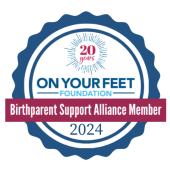Is Legal Guardianship the Same as Adoption? Key Differences

If you’re exploring long-term care options for a child, you may be asking, is legal guardianship the same as adoption? Both provide stability and protection, but they shape a child’s future in unique ways. Understanding these differences can help you make the best choice for their well-being.
Every child deserves a loving, secure home, and having a clear understanding of each path can give you the confidence to move forward with certainty. In this post, we’ll break down the key differences between legal guardianship and adoption, outlining how each option impacts parental rights, financial responsibilities, and the child’s long-term future.
Understanding Legal Guardianship
Legal guardianship allows a designated adult to take responsibility for a child’s care, well-being, and decision-making. This arrangement may be put in place when parents are unable to care for their child due to circumstances such as illness, financial hardship, or other personal challenges. However, guardianship does not permanently sever the legal relationship between a child and their birth parents. Here are the key aspects of legal guardianship to consider.
- Parental Rights Are Not Terminated – In most cases, birth parents still retain their legal rights and may be involved in decisions regarding the child’s upbringing.
- Court Oversight Is Required – Guardians are appointed through a legal process and are required to follow court orders regarding the child’s care.
- Can Be Temporary or Permanent – Some guardianships last until the child turns 18 or 21, while others may be temporary based on the parents’ ability to resume care.
- Guardians Can Be Relatives or Non-Relatives – A guardian could be a family member, family friend, or another responsible adult approved by the court.
- Birth Parents May Have Visitation Rights – Unlike adoption, guardianship does not completely cut off the child’s relationship with their biological parents.
Legal guardianship is often chosen when birth parents are unable to provide full-time care but still want to maintain a connection to their child. It provides a layer of legal protection while keeping the door open for future reunification.
What Is Adoption?
Adoption, on the other hand, creates a permanent legal relationship between a child and adoptive parents. Once an adoption is finalized, the adoptive parents assume full parental rights and responsibilities, just as if the child had been born to them. Here are the key aspects of adoption:
- Parental Rights Are Permanently Transferred – Birth parents legally relinquish their rights, and adoptive parents become the child’s permanent legal parents.
- No Court Supervision After Finalization – Unlike guardianship, once an adoption is finalized, the court does not oversee the child’s care.
- Adoptive Parents Make All Legal and Medical Decisions – The child is legally part of the adoptive family, with the same rights as a biological child.
- Provides Permanent Stability – Adoption is a lifelong commitment, offering security and a legal family bond that lasts beyond childhood.
- Different Types of Adoption Exist – Some adoptions allow for continued contact with birth parents (open adoption), while others do not (closed adoption).
Adoption offers children a permanent home and ensures they have the emotional and legal stability they need to thrive. For adoptive families and birth parents considering this path, understanding the long-term implications is crucial.
Legal Guardianship vs. Adoption: A Side-by-Side Comparison
When weighing legal guardianship vs. adoption, it helps to compare how each affects the child, birth parents, and guardians or adoptive parents. While both provide stability, they differ in parental rights, financial responsibilities, and long-term commitments. Here is a side-by-side comparison to highlight the key differences:
| Factor | Legal Guardianship | Adoption |
|---|---|---|
| Parental Rights | Birth parents retain rights | Birth parents' rights are permanently relinquished |
| Legal Relationship | Temporary or permanent, but reversible | Permanent and irrevocable |
| Decision-Making | Guardian makes decisions, but birth parents may have input | Adoptive parents have full rights |
| Child’s Last Name | Usually stays the same | Can be changed to match the adoptive family |
| Financial Support | May receive financial assistance or benefits | Adoptive parents assume full financial responsibility |
| Duration | Ends at age 18 or earlier if circumstances change | Lifelong relationship between child and adoptive parents |
| Inheritance Rights | Child may not automatically inherit from guardians | Child has the same inheritance rights from the adoptive parents as a biological child would |
| Visitation Rights | Birth parents may retain visitation rights | Birth parents’ contact depends on open or closed adoption agreements |
| Termination | Can be modified or revoked if circumstances change | Permanent and legally binding, cannot be reversed |
Which Option Is Best for the Child?
Choosing between legal guardianship and adoption depends on several factors, including the child’s emotional needs, the birth parents’ situation, and the long-term commitment the guardian or adoptive parents can provide.
Stability and Permanency
Adoption provides a lifelong commitment, giving a child a permanent family. This stability can be especially important for a child who has experienced uncertainty or disruption in their early years. Guardianship, while providing care and structure, may leave room for future changes if the birth parents’ circumstances improve or if the court orders modifications.
Emotional and Psychological Impact
Children thrive in environments where they feel secure and supported. Both legal guardianship and adoption offer stability, but they do so in different ways. Adoption creates a permanent legal bond, which can contribute to a strong sense of belonging. Guardianship provides care and protection, though it may come with more flexibility, which can lead to changes in a child’s living situation over time. The best option depends on the child’s needs and the family’s circumstances.
Legal and Financial Considerations
Adoption fully transfers parental rights, meaning adoptive parents assume all responsibilities, including financial obligations. In contrast, guardianship may involve financial assistance from state programs, the child’s birth parents, or other sources. Families considering either option should explore legal and financial implications to make an informed decision.
Long-Term Family Dynamics
The long-term impact on family relationships is another important factor. Adoption permanently integrates the child into a new family, while guardianship maintains a connection to birth parents, which may come with complexities in decision-making and attachment. Understanding how each option affects family dynamics can help ensure a stable and supportive environment for the child.
Both legal guardianship and adoption serve important roles in providing care and stability for children, but their long-term impact differs. Families should carefully evaluate their ability to provide security, support, and a nurturing environment to determine which path best meets the child’s needs.
Important Considerations for Parents
For parents considering legal guardianship or adoption, understanding the legal, emotional, and long-term implications is essential. Each option comes with its own responsibilities and commitments, and what works best depends on the needs of the child, the birth parents’ situation, and the potential guardian or adoptive parents’ ability to provide a stable home. Here are some key factors to consider when making this important decision.
1. Level of Permanency
Adoption is a permanent legal process that fully transfers parental rights, creating a lifelong family bond. Legal guardianship, however, can be temporary or long-term, depending on court rulings and the birth parents’ circumstances. If long-term stability is a priority, adoption may be the better choice.
2. Relationship with Birth Parents
Some families prefer to maintain a connection with birth parents, which is more feasible under guardianship. Birth parents typically retain some legal rights and may continue to have visitation and input in major decisions. In adoption, parental rights are terminated, though open adoption arrangements can allow for some level of continued contact.
3. Legal Responsibilities and Decision-Making
Adoptive parents assume all rights and responsibilities as legal parents, making all medical, educational, and financial decisions for the child. Guardians, on the other hand, must follow court orders and may need approval for major decisions, such as relocation or medical procedures. Parents considering guardianship should be prepared for ongoing legal oversight.
4. Financial and Support Resources
Guardianship may come with state-provided financial assistance, depending on the situation, while adoption requires the adoptive parents to assume full financial responsibility. Some children in guardianship may qualify for government benefits, while adopted children become legal heirs with full inheritance rights.
5. Emotional and Psychological Impact on the Child
Children thrive in stable, nurturing environments. Adoption provides permanency and a strong sense of belonging, while guardianship may carry some uncertainty if the arrangement could change. Parents should consider how the choice will affect the child’s emotional security and development.
6. Future Flexibility
Guardianship allows for future adjustments if birth parents regain stability and wish to resume custody. Adoption, however, is permanent and legally binding. Families should assess whether they need flexibility or a lifelong commitment before making a decision.
Every family’s situation is unique, and there is no one-size-fits-all answer. Parents considering guardianship or adoption should weigh these factors carefully and consult with professionals to ensure they are making the best choice for the child’s future.
Is Legal Guardianship the Same as Adoption? Making the Right Choice
Understanding the difference between adoption and guardianship is essential for making informed decisions that serve the child’s best interests. If you’re asking, “is legal guardianship the same as adoption?”, it’s important to know that while legal guardianship provides temporary or long-term care with birth parents retaining some rights, adoption offers a permanent and legally binding family structure. Every situation is unique, and families should carefully consider which option provides the most stability and support for the child’s future.
For families considering adoption, expert guidance makes all the difference. At Adoption Center for Family Building, compassionate professionals help birth parents and adoptive families navigate the process with confidence. Whether you’re looking for support or ready to take the next step, contact us today at Adoption Center for Family Building.





